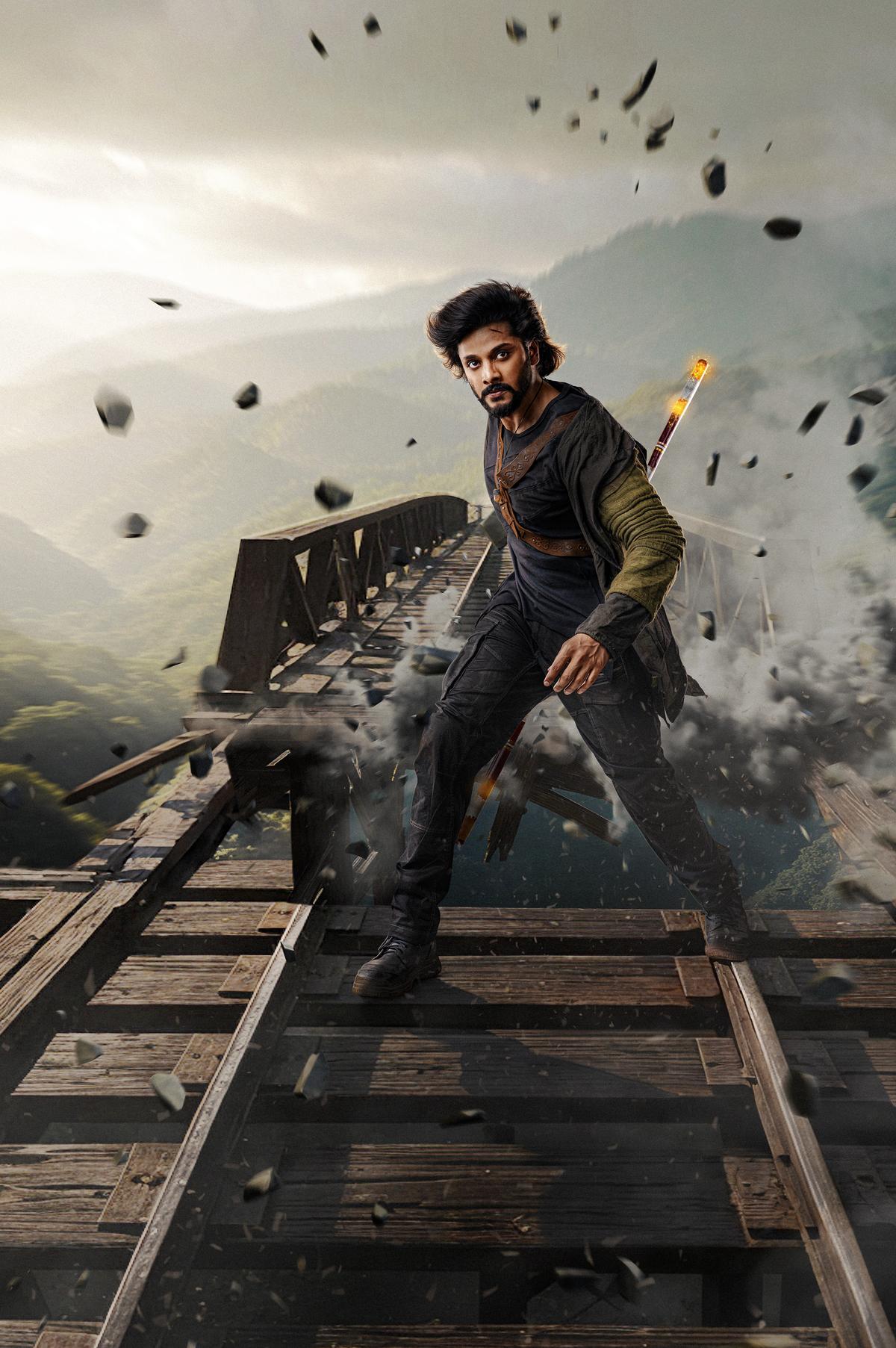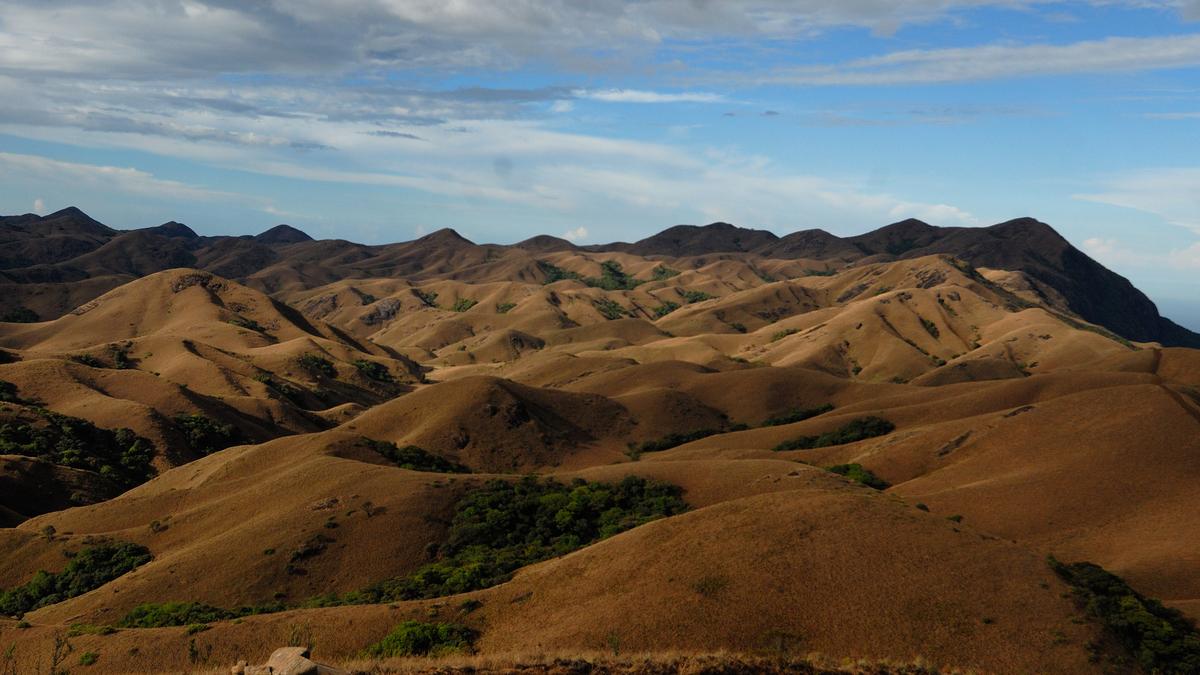“I am enjoying this phase of silence; I do not want to get into the headspace of thinking I have won,” says Karthik Ghattamneni, cinematographer-director of the Telugu film Mirai, which has crossed the ₹100-crore mark at the worldwide box office. On September 12, the day of the film’s release, Karthik was in Tirupati for a darshan. He says, “That has always been my way of surrendering to the universe after completing my work. I watched Mirai on day two, standing at the corner of a cinema hall and observing what was working and what wasn’t for the audiences.”
Karthik’s previous film, Eagle, had a lukewarm reception and it was not easy to pick himself up and work on a superhero fantasy adventure drama. “I am usually critical of my work. This time, I’m aware that we couldn’t have anything more under the given circumstances. It feels incredible to have pulled off such a film.”
Dialogue with the universe
The idea for Mirai emerged nearly a decade ago when he lost a dear friend, Vijay, to whom he has dedicated the film. “Vijay and I went to engineering college and film school together,” Karthik recalls. While travelling to Rameshwaram to immerse his friend’s ashes, Karthik recalls experiencing a few unexplained events. “For instance a bird was travelling with us for a distance, and there was something surreal about the waves that touched my feet at the beach. All that I experienced inspired me to write a story about what the universe is trying to convey. Anchoring such a story in the Indian epics, I thought, would add depth to the story.”

Yet, it took time for a concrete story to emerge. Meanwhile, Karthik worked on other films as a cinematographer. “However, the idea kept returning,” he says. By 2022, a story was in place and his friend, actor Teja Sajja, was confident that it would make for an interesting superhero film. “It is similar to how my protagonist, Veda (Teja Sajja), ventures into the unknown. I knew that if I took a few steps forward, I would find a way with the story.”
The writing of the story and screenplay involved several iterations and took Karthik and co-writer Manibabu Karanam three years. “The initial version would have made for a six-hour film. We filtered what was absolutely necessary to make the story interesting to all age groups.”
Mirai narrates the story of a Superyodha, or the chosen one, who has to protect the ninth grantha or book, and prevent an evil force from turning into an immortal and wreaking havoc on the world.
“We had written the arc for each of the granthas or books — what they signify, who are their guardians, and how the books are taken over by Manchu Manoj’s character, Mahavir Lama, wielding the Black Sword. It would have been repetitive to show each of these stories on screen. So we state that he has already taken over six books, and show how he overpowers the guardians of the kala grantham (book of time) and sabda grantham (book of sound). In the later portions we reveal how he took the first book. The big battle for the ninth book that would give him immortality, is reserved for the climax.”
AI for planning
The film is an example of achieving technical finesse within a modest budget, reportedly around ₹60 crore. Karthik reveals that AI was used to generate advanced storyboarding at the planning stages. Production designer Nagendra Tangala was roped in at an early stage, and extensive sketching was done for the pre-interval episode featuring the bird Sampathi.
An in-house visual effects team was set up. “At least 15 people worked with us through the film and in the last two months, we had a 300-member team,” says Karthik. The advantage of an in-house VFX team was the easy access of footage, and the downside was the possibility of an abundance of VFX shots from which they had to select what was required for the film.
The filming was done over 120 days, and nearly half of it warranted guerilla method of shoot, with a crew of 30 members. “I had done such shoots in my student days for short films; this was like coming full circle,” says Karthik, explaining how some of the portions on the Himalayas and the climax bridge sequence filmed in Sri Lanka required such an approach.

Teja Sajja in ‘Mirai’
| Photo Credit:
Special Arrangement
“Sometimes the weather was conducive, at other times we had to be patient. Teja walking against the wind while climbing the mountains is all real. For the bridge sequence, we could not use additional lights or generators. We used natural light in the best possible manner. Despite the uncertainty, when I looked through the camera, I knew we were on the right track. And I hoped that the audience would also connect with the narrative.”
The story of the mother and son who never meet is a pivotal portion of the story. On the choice of Shriya Saran to play spiritually-inclined Ambica who can foresee the threat to the world, Karthik says, “We wanted someone who can look elegant, dignified and vulnerable. It took Shriya a while to find the rhythm of her character; then it was a breeze. Her posture, body language, costumes and colour palette added to the character’s aura.”
Sets and extensions
The Himalayalan ashram portions were filmed at a darbar square in Nepal with VFX extensions. Instead of a cold colour palette on the mountains, warm tones were used to indicate divinity.
A large set was constructed for the ‘paradise scrapyard’ inhabited by Teja. The scrapyard is a metaphor to him growing up neglected, until he begins his search for the larger truth. Teal and rusted metallic tones were used for this portion. Karthik explains, “Overall, we did not want a dark colour palette. We wanted the film to be child-friendly as well, so we chose colours that were neither too bright nor too dull. We strived to achieve this balance in costumes, production design, minimal makeup for the actors, and the colour grading in post production.”
Karthik admits that when Kalki 2898 AD released, the team noticed a few similarities in set design and concepts, and made changes to avoid the sense of deja vu.
One of the challenging tasks for the team was the pre-interval portion featuring the gigantic bird, Sampathi. A large set was put up at Shamshabad in the outskirts of Hyderabad. With the help of animatronics, a 20-foot bird was designed to serve as a reference point while filming. “The set was massive. We needed another 10-foot space above the bird to set up the lights. We used further VFX extensions to make the space appear even larger on screen,” says Karthik.

VFX trial and error
Every step of VFX involved trial and error. “None of us knew how certain things would shape up. For example, the powder emanating from the black sword, or the gold dust that denotes knowledge from the books… A film of this scale and vision was a first for me. Though we had a few references of animation, achieving the desired result was tough. We worked on the VFX for the Sampathi sequence until five days prior to release. The feathers had to appear wet, with water dripping from it, and the scene that shows Teja emerging from the cave atop the Sampathi took 16 days to render.”
Karthik hails editor Sreekar Prasad as one of the film’s biggest assets. Though Karthik is also a trained editor, this time he let the veteran editor be the guiding force. “He ensured that the film had a fast-paced narrative to make it commercially viable.”
The stage is set for Mirai 2, but Karthik is not sure if he would be immediately working on it. “I want to do a spectacle film in a different space, a different genre.”
Published – September 17, 2025 04:44 pm IST



